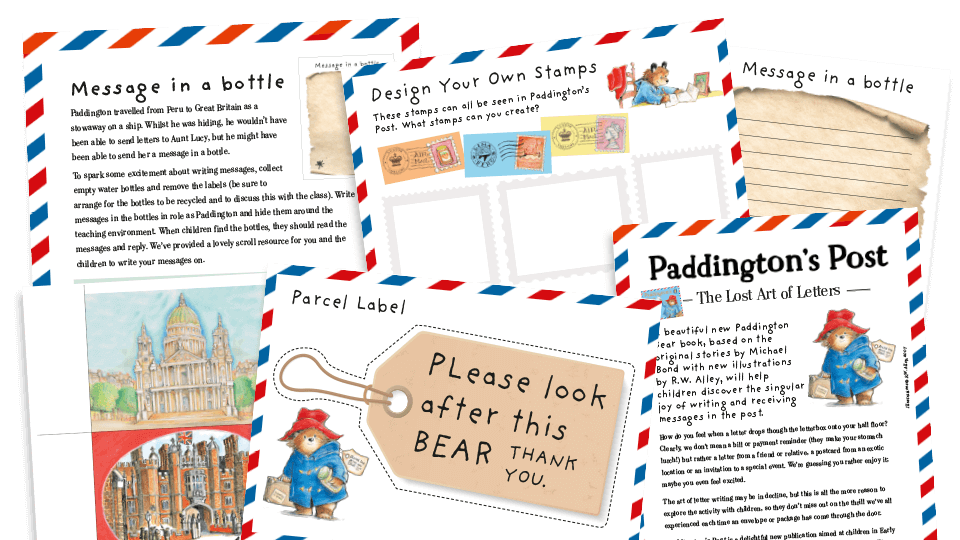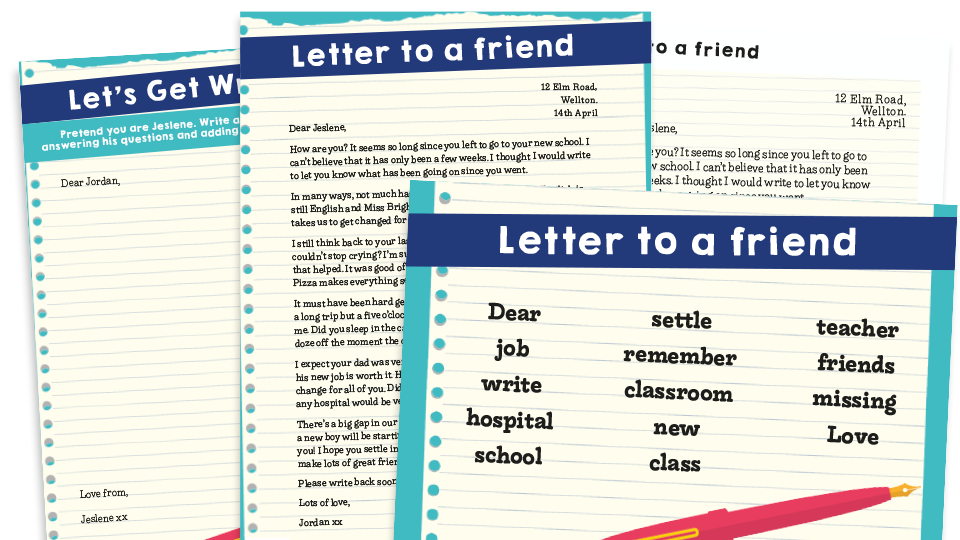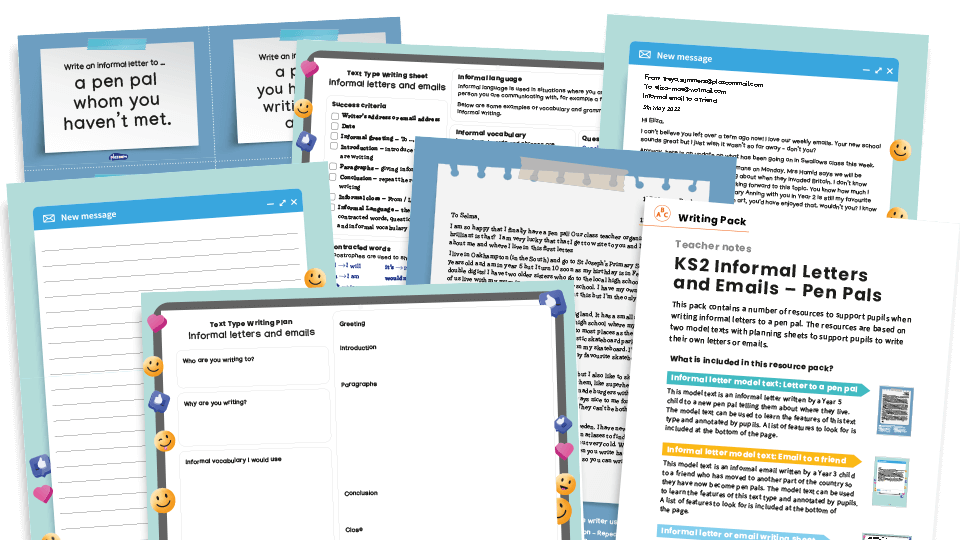From friendly notes to formal requests, here’s how to teach the key features of a letter in ways your class will love...
In these days of electronic messaging, letter writing seems almost anachronistic. Certainly, the drafting of delightful informal letters seems to be something of a dying art.
Meanwhile, the formal letter can appear alien to primary school children. When would they ever write a letter of complaint to a restaurant, or would they just @ them on X?
Can they see themselves writing an application letter, resignation letter or business letter? Or does the idea of formal letter writing, let alone a handwritten letter, seem completely pointless?
Nevertheless, it is a genre that children are expected to learn at both KS1 and KS2 and there are important skills that are transferable to a range of other forms of communication.
Here we’ve gathered practical ideas, engaging activities and ready-to-use resources to help your students explore the features of a letter confidently and creatively.
Sell writing letters to them
Whatever your views on letter writing might be, create a sense of enthusiasm and purpose. At KS1, where you would only really expect to focus on informal letters, emphasise the joy of receiving them.
Perhaps you could give it a fictional purpose. For example, we have a delightful set of resources based around learning the art of letter writing with Paddington Bear.

Meanwhile, for older children, we offer a set of resources based around the theme of eating insects – yum! This Bug Banquet project builds towards creating a persuasive text in the form of a letter that could be used as evidence for the end of KS2 assessment.
Meanwhile, this free KS2 lesson plan from Teachwire is based on the novel The Train to Impossible Places by PG Bell and will inspire children to find the fun in composing their own letters.
Features of a letter WAGOLLS
Even if you have to beg, borrow and steal from your friends and family, gather a wide selection of genuine letters to share with your pupils.
Pick each sample apart to examine the key features of a letter. With KS2 children, compare formal letters with informal ones, focusing on ways of conveying formality such as precise, technical vocabulary, passive voice, subjunctive verb forms and the avoidance of contractions.
If you’re struggling to find examples of suitable informal letters, especially for younger children, go through our Letter to a Friend worksheets.

Older children might find this persuasive writing WAGOLL more appropriate – it contains a model letter written by a ten-year-old to her MP about rap music in schools.
Meanwhile, this model text and accompanying activities for Year 6 focus on a pair of job application letters, one written in a formal register, and the other informal.
This KS2 informal letters pack is built around two high-quality penpal-themed model texts, written by professional authors.

Respect the conventions and features of letter writing
The thing about letters is that people really like the different bits to be in the right place. This can be a bit weird for children to get their heads around, so why not make it a game?
I’ve seen these conventions successfully taught by turning it into a sort of jigsaw activity, either on a smart board or using cardboard cut-outs whereby children need to arrange all the elements – date, sender’s address, recipient’s address, etc. – in the correct place on the page.
This complaint letter resource pack for Year 6 sets out the features of a formal letter and includes checklists, posters, modelled examples and planning sheets.
How to write formal and informal letters
Even an informal letter benefits from a plan, so encourage children to organise their ideas before writing. With formal letters, however, this takes on even greater significance for two reasons.
First, there is an expectation that formal letters are concise and to the point (hopefully, pupils would have noticed this in the examples you shared with them), so you need to know beforehand what you want to write.
Second, there are other conventions, such as starting off by stating why you are writing and often finishing with some explanation of what you want to happen next. Getting from one end to the other calls for a logical sequence of ideas, which demands a clear plan.
Use a writing frame/template
Even if you have effectively taught the conventions, it can be surprisingly difficult for children to position the elements accurately themselves.
To avoid a lot of sighing and teeth grinding, provide letter-writing templates, especially for younger children.
You can make these yourself, but you could save yourself the bother by using our aforementioned Letter to a Friend resources. Alternatively, this letter-writing template pack for KS1 features a poster, planning sheets and templates. There's a KS2 version too.

Letter writing prompts – openings
Whatever the purpose of the letter, it’s important to get off to a good start. Of course, there’s the salutation to deal with first.
Make sure you’re clear about when to use Dear Sir/Madam or a given name or even To whom it might concern (if you’re feeling brave enough), depending on the person you’re writing to and why.
Informal letters need a bright and breezy opening or possibly an implied reason for writing such as Thank you so much for the money you sent me for my birthday.
Letter writing prompts – closings
How to end a letter can be something of a minefield. Using the correct sign-off is very important, especially with formal letters.
The convention is that if you start with Dear Sir or Madam, you should finish with Yours faithfully. When you use the addressee’s name (Dear Ms Patel, for example) you should use Yours sincerely.
Hopefully, your pupils could explain why Lots of love is completely inappropriate!
It might be interesting to note that the advent of formal emails has already evolved its own conventions: Kind regards will often be found at the end of a business email but not usually on a letter.
Make it real – send a physical letter
The best way to bring letters to life is to actually send them. If at all possible, set up letter-writing activities which actually involve sending the letters.
Better still, make it one with at least a fair chance of getting a reply. I’ve known pupils get replies from authors, MPs and scientists.
I have also seen a class corresponding with elderly residents at a care home as part of a history project to get first-hand reflections of how life has changed over recent decades.
A note about handwriting
If ever there was a genre through which to emphasise the importance of good handwriting, it must be this one – especially if children’s letters are going to be sent to real people.
When all your editing and improving processes are complete, get pupils to write up their final version as neatly as possible (but remember to make a copy before sending the original).
Sue Drury qualified as a primary teacher in 1999. Teaching pupils from Year 1 to Year 8, she has held a variety of positions including maths and English subject leader, year leader, and assistant headteacher. Sue has mentored students and NQTs, offering guidance and advice using her years of experience. She created many of Plazoom's literacy resources.